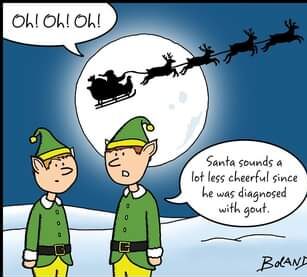This is a real [reported] story of a lawsuit involving an ED physician in Ohio.
—
The summary:
Michael Cleveland was grocery shopping when he had an apparent heart attack. He was taken to a hospital where, after resuscitative efforts, the ED doctor pronounced him dead. He was later transferred to a nearby hospital and pronounced dead a second time.

The case
Let’s back up: after Michael collapsed at the grocery store, he had chest compressions started by bystanders and paramedics. He was taken by EMS to a nearby hospital. His wife, Tammy, arrived at the hospital and sat in the waiting room while resuscitative measures were being performed. The ED physician ultimately came out to deliver the bad news: after more than one hour of collaborative efforts, her husband was dead. She was allowed back into the room to say some final goodbyes but she was, again, told that he was deceased.
She entered the room and saw him moving his eyes.
When she told the ED physician, he insisted that Michael was in fact dead.
Then she saw him move.
Pause
We all know about the lingering effects of epinephrine and vasopressors and the fact that patients can sometimes take a few breaths even after they are pronounced dead, but these things are not compatible with life and are not life-sustaining. What the wife describes is different.
Resume
When she told the doctor and a nurse what she had seen, she was told that her husband simply ‘had life expelling out of his body.’
After the nurse left the room and Tammy was again alone with her ‘now-deceased’ husband, he “turned his eyes and looked at [Tammy] as she spoke to him,” according to the lawsuit.
She called the doctor and nurse back in but they “did not touch [Michael] or check his vitals but told the family members this was normal and they again left the room,” according to the lawsuit.
When Tammy kept speaking to her husband, he “responded by turning his eyes towards [her], moving his head side to side, looking at [her] and moving his legs,” the complaint continues.
“The coroner came in and I just yelled at him: ‘Are you here to prove that my husband is dead? Because he’s not. Look at him,’” Tammy recalled. When Michael’s arm, leg and mouth moved, the coroner “looked at him and walked out” to get the doctor, she said.
The coroner
The funeral director who came to pick up the body reports that in his 15+ years of experience, he had “never seen a dead body do that.” The prosecuting attorney said, “Several times, he went back to the room and saw him moving his limbs, moving his legs…He went back to the doctor and said, ‘I’m not taking his body. I’m leaving. If he ceases to have any life actions, give me a call and I’ll come back.'”
He reportedly advised the doctor to re-check his vital signs. The family reportedly made four attempts to get the doctor to recheck his death pronouncement.
Reassessment
More than two hours after he had declared Michael dead, the ED physician finally came back into the room and agreed to check for a pulse.
“My God, he’s got a pulse,” the doctor said, Tammy recalls.
“No s—,” she replied.
This version of events is confirmed by Tammy’s brother and father: “We both walked in the room expecting to console Tammy [because] Mike had passed. We walked in and looked at each other and were stunned because it was obvious to us that he was still breathing. There was condensation in the [breathing] tube. We were just shocked,” said the brother.
When she was later asked if she could have done more to get the doctor to listen to her, she replied, “Short of putting a knife to his throat? No.”
Michael eventually began thrashing about and had to be restrained before he could be transferred for higher level of care. At the new hospital, he was taken directly to the cath lab and had a stent placed, but had suffered rib fractures, a right-sided pneumothorax, and effusions (probably from CPR). He ultimately died.
Final thoughts
There’s no doubt that this is a sad story with the final results still unknown. However, it’s important to keep in mind that this story is told from a single person’s viewpoint. We haven’t heard the defense’s version of the events. Regardless of what really happened, it’s a sad outcome. It may not have been avoidable, but some of the family’s suffering at least could have been. It’s a good reminder to, at the very (very) least, try your best to address family members’ concerns.




